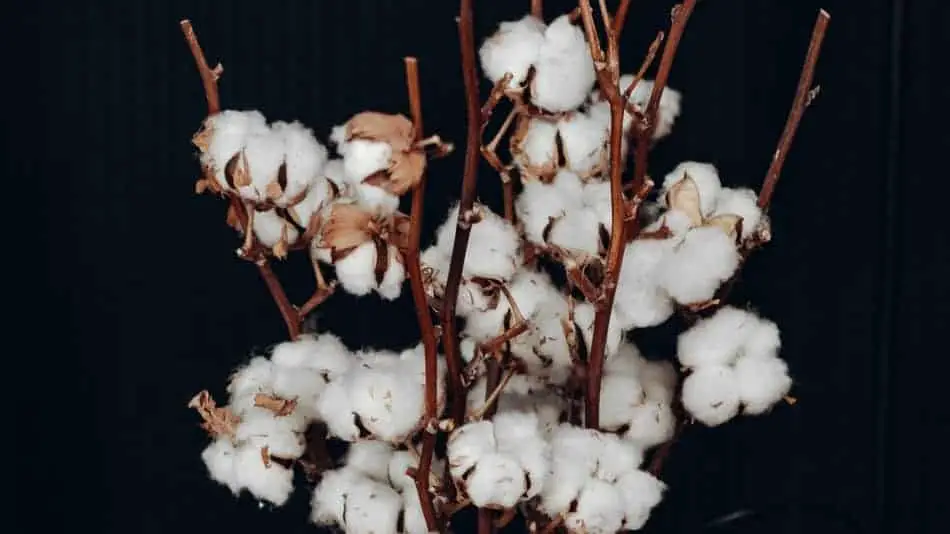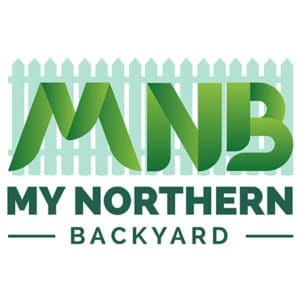
Cotton is an amazing plant, full of rich history (bright and dark) and has been a massive economic driver in the South. It’s also a beautiful plant that can add attraction to any backyard. Given some of the trials and tribulations around cotton, I wondered if it was legal for me to put it in my backyard during our renovation – if it was legal, and if it was possible farther north. So I took a little time to look into it and this is what I found.
So can I grow cotton in my backyard? It’s definitely possible to grow cotton in more mild climates. In more northern states and near the border in Canada, cotton can be grown from seed to mature boil. It may take a lot of love and extra care to bring your plants to maturity but it’s worth the trouble.
Characteristics of Cotton and What it Needs
Cotton is a perennial plant usually grown in warmer southern states because of the long growing season – about 5 months, and the need for continuous heat to get the plant to maturity. During the growing season cotton will first product yellow flowers, and then a large boll of fibers and seeds that are the fruit of the plant. Cotton can be started inside to extend the growing season or in the controlled conditions of a greenhouse and needs soil temperatures of 60F/16C for its entire growing season. Cotton grows well in hardiness zones 8-11, which excludes it from surviving most winters in northern climates (see here for what the heck a hardiness zone is.)
Because cotton is a plant that will be killed by the frost is is often grown as an annual if you’re growing it farther north with the plants dying and being replanted each year. The bolls will dry and open allowing access to the fibers and the seeds after the plant has died and dried out – after a frost the bolls can even be picked and brought inside to dry and open. Another option is to move the plants into a controlled greenhouse or back inside – cotton can be grown in containers which provides several options for growing and moving the plant.
How to Grow Cotton in Colder Areas
So how do you grow cotton plants in colder areas? The best way is to start the plant inside. Grab yourself any 6 inch pot or similar container (you can get creative here) and fill it with potting soil – leaving a couple of inches at the top. Place three or four cotton seeds in to the pot, cover with some more soil so there is about an inch free at the top, and moisten. Remember the soil temperature has to be 60F/16C, so let the soil warm completely in the house before planting the seeds. Place the filled pot in a sunny spot to germinate and start to grow. Once you see sprouts, make sure you rotate the pot about a quarter turn when you water it (about every 7 days) to ensure that your plant will grow evenly. When the plant is outside the light moves, but you don’t get the same kind of movement inside.
After the seedlings sprout, choose the best of the seedlings and keep that in the current pot – remove the others (you can replant them in another pot if you want to try and keep them) and continue to water every 7 days. Make sure you add fertilizer according the the instructions on the bottle. When the plant is about to flower you have a couple of choices – transplant it outside if it’s warm enough (soil temps higher than 60F/16C) or move it to a bigger pot(think 12″). The larger pot can be moved outside and back in if the temperature is low or fluctuates. It should take 6-8 weeks for the plant to flower, so plan accordingly.
Harvesting Your Cotton in Colder Climates
Because cotton requires a fair bit of heat to flower and produce the required fibers, you may find that in your garden you get bolls but the never burst to provide the cotton fibers themselves. That’s not a problem – as long as the bolls are there. When the cotton plant dies at the first frost, it will go woodlke (like a dried branch). When that happens, if the boll has not burst, remove them from the plant and bring them inside to dry. When the bolls have dried out, they will still burst and provide access to the cotton. I’ve read about people placing them near a fireplace if they have them to get warm dry heat, but haven’t tried it myself.
When the bolls have burst you get a combination of cotton fibers and seeds, and the seeds are buried deep inside the fibers. Working the seeds out by hand can be a major pain (which is why someone invented the cotton gin!) but can be a fun activity with kids. Make sure you wear gloves while extracting the cotton and seeds from the boll! Those boll edges are sharp and can cut you.
Cotton is Illegal to Grow in Some US States
In states where cotton is a cash crop, growing it in your backyard can be illegal to grow cotton in your backyard. This is thanks to a little beetle called Boll Weevil, or more accurately the Boll Weevil eradication programs. The boll weevil feeds on cotton buds and flowers, and can devastate the large scale producers if not aggressively controlled.
When I last checked, growing cotton in your backyard is illegal in the following states. This may have changed or may change in the future, so make sure you check your local laws before planting cotton in your backyard.
- Arkansas
- Louisiana
- Mississippi
- Missouri
- Oklahoma
- Tennessee
- Texas
- Alabama
- Arizona
- California
- Florida
- Georgia
- Kansas
- New Mexico
- North Carolina
- South Carolina
- Virginia.
Additional questions
What can I do with my cotton after I harvest it? Activities with kids (like helping get out the seeds, or soaking and re-planting the seeds), spinning, stuffing, quilting, wreaths – whatever comes to mind!.
Is cotton good to grow for kids? Yes! The harvesting of the seeds all the way through planting is easy and a great activity for kids (just watch the edges of the boll – they’re sharp!
Can I eat cotton seeds? Not if you’re human! Cotton seeds contain
gossypol, which is toxic to humans. Don’t do it.
Can I replant my cotton seeds? Yes! You will need to soak them overnight before re-planting, but you should be able to store them in a closed container in a dark space until the next growing season.

